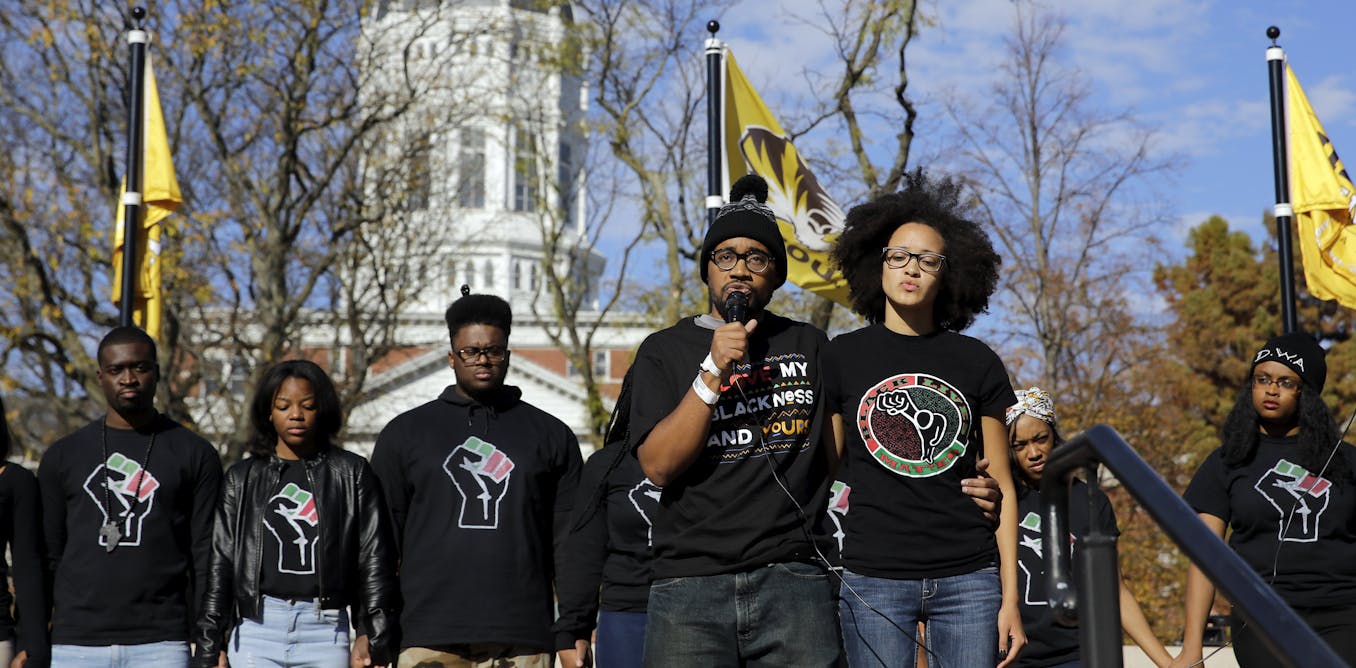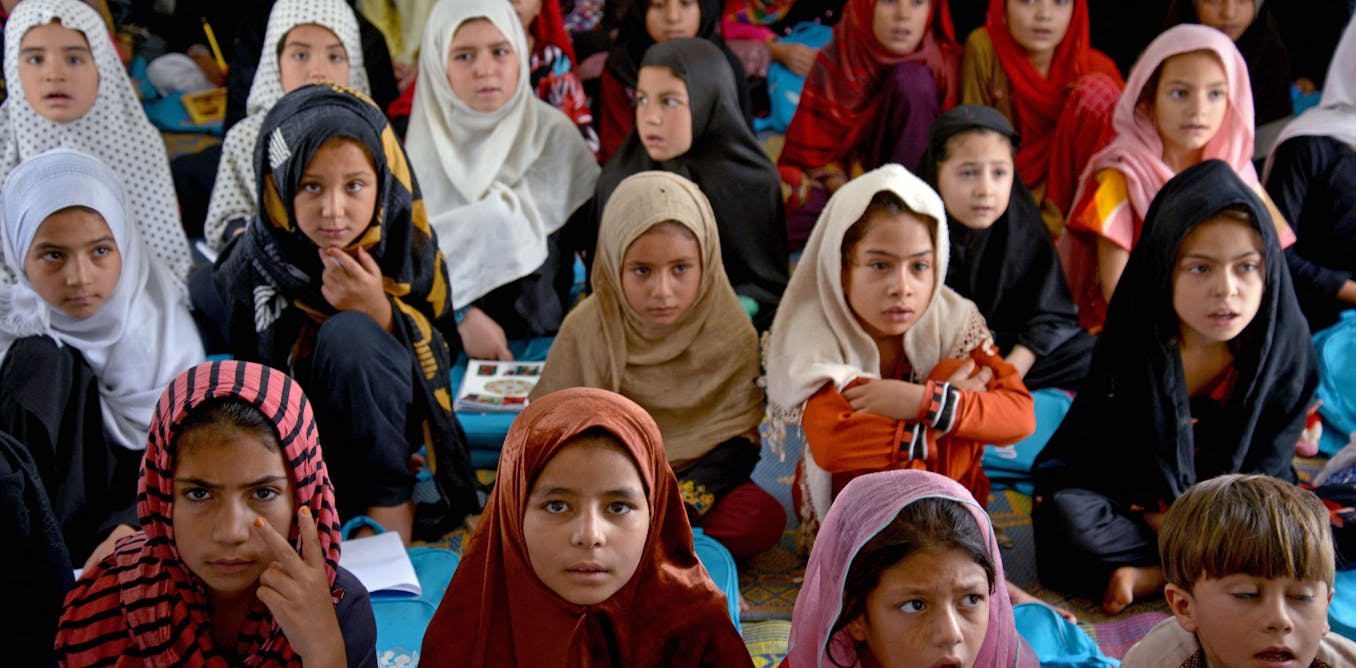Education
The start of high school doesn’t have to be stressful
This month, more than 4 million students across the nation will begin high school.
Many will do well.
But many will not.
Consider that nearly two-thirds of students will experience the “ninth-grade shock,” which refers to a dramatic drop in a student’s academic performance.
Some students cope with this shock by avoiding challenges. For instance, they may drop rigorous coursework. Others may experience a hopelessness that results in failing their core classes, such as English, science and math.
This should matter a great deal to parents, teachers and policymakers. Ultimately it should matter to the students themselves and society at large.
One of the biggest reasons it should matter is because students’ fate as they transition to ninth grade can have long-term consequences not only for the students but for their home communities. We make these observations as research psychologists who have studied how schools and families can help young people thrive.
In the new global economy, students who fail to finish ninth grade with passing grades in college preparatory coursework are very unlikely to graduate on time and go on to get jobs. One study has calculated that the lifetime benefit to the local economy for a single additional student who completes high school is half a million dollars or more. This is based on higher earnings and avoided costs in Health care, crime, welfare dependence and other things.
Lifetime consequences
The consequences of doing poorly in the ninth grade can impact more than students’ ability to find a good job. It can also impact the extent to which they enjoy life.
Students lose the adults and many of the friends they turned to for support when they move from eighth to ninth grade. One study of ninth grade students found that 50 percent of friendships among ninth graders changed from one month to the next, signaling striking instability in friendships.
In addition, studies find the first year of high school typically shows one of the greatest increases in depression of any year over the lifespan.
Researchers think that one explanation is that ties to friends are severed, while academic demands are rising.
Furthermore, most adult cases of clinical depression first emerge in adolescence. The World Health Organization reports that depression has the greatest burden of disease, in terms of the total cost of treatment and the loss of productivity, of any affliction worldwide.
In search of solutions
Given all that’s riding on having a successful ninth grade experience, it pays to explore what can be done to improve the academic, social and emotional challenges of the transition to high school.
So far, our studies have yielded one main insight: Students’ beliefs about change – their beliefs about whether people are stuck one way forever, or whether people can change their traits and abilities – are related to their ability to cope, succeed academically and maintain good mental health. Past research has called these beliefs “mindsets,” with a “fixed mindset” referring to the belief that people cannot change and a “growth mindset” referring to the belief that people can change.
We found that when students felt like their declining grades were a sign that they will never be successful, or when they feel like a loss of support from friends means that they will be stuck being “not likable” for life, then they have coped poorly.
In one recent study, we examined 360 adolescents’ beliefs about the nature of “smartness” – that is, their fixed mindsets about intelligence.
We then assessed biological stress responses for students whose grades were dropping by examining their saliva for cortisol levels — a so-called “toxic stress” hormone that is secreted by the body when people feel threatened.

Students who believed that intelligence is fixed – that you are stuck being “not smart” if you struggle in school – showed higher cortisol levels in their saliva when their GPAs were declining at the beginning of ninth grade. If students believed that intelligence could improve – that is to say, when they held more of a growth mindset of intelligence – we detected less cortisol in the saliva of students whose grades were declining.
This was an exciting result because it showed that the body’s stress responses are not determined solely by one’s GPA. Instead, declining grades only predicted worse stress hormones among students who believed that worsening grades were a permanent and hopeless state of affairs.
Keeping stress at bay
We also investigated the social side of the high school transition. In this study, instead of teaching students that their smartness can change, we taught them that their social standing – that is, whether you are bullied or excluded or left out – can change over time. We then looked at high school students’ stress responses to daily social difficulties. That is, we taught them a growth mindset about their social lives.
In this study, students came into the laboratory and were asked to give a public speech in front of upper-year students. The topic of the speech was what makes someone popular in high school. Following this, students had to complete a difficult mental math task in front of the same upper-year students. This is called the Trier Social Stress Test, and it has proven to be an effective and ethical way to examine physiological signatures of stress responses. Public speaking is stressful but is no different from common experiences in high school. Students are thoroughly debriefed and have the opportunity to have a more lighthearted interaction with the upper-year students afterward. Parents also consented before allowing their children to participate.
Students who were not taught that people can change showed poor stress responses. When these students gave the speech, their blood vessels contracted and their hearts pumped less blood through the body – both responses that the body shows when it is preparing for damage or defeat after a physical threat. Then they gave worse speeches and made more mistakes in math.
But when students were taught that people can change, they had better responses to stress, in part because they felt like they had the resources to deal with the demanding situation. Students who got the growth mindset intervention showed less-constricted blood vessels and their hearts pumped more blood – both of which contributed to more oxygen getting to the brain, and, ultimately, better performance on the speech and mental math tasks.
These findings lead to several possibilities that we and others are investigating further.
First, we are working to replicate these findings in more diverse school communities. We want to know in which types of schools and for which kinds of students these growth mindset ideas help young people adapt to the challenges of high school. And where do they need to be paired with other resources to have their strongest effects? We have made a free beta version of our intervention available to schools or parents.
We also hope to learn how teachers, parents or school counselors can help students keep their ongoing academic or social difficulties in perspective. We wonder what would happen if schools helped to make beliefs about the potential for change and improvement a larger feature of the overall school culture, especially for students starting the ninth grade.
-

 Education2d ago
Education2d agoColorado schools commit to protecting students ahead of potential mass deportation
-

 Education1w ago
Education1w agoMothers, metaphors and dyslexia: What language reveals about the challenges of a child’s learning disability
-

 Education1w ago
Education1w agoBrain-training games remain unproven, but research shows what sorts of activities do benefit cognitive functioning
-

 Education1w ago
Education1w agoRacism is such a touchy topic that many US educators avoid it – we are college professors who tackled that challenge head on
-

 Education1w ago
Education1w agoHere’s what happens when a school is located near a cannabis dispensary
-

 Education1w ago
Education1w agoHow the Taliban are seeking to reshape Afghanistan’s schools to push their ideology
-

 Education1w ago
Education1w agoState Board of Education keeps pro-charter school bent after Republican wins 8th District race
-

 Education1w ago
Education1w agoDenver Public Schools superintendent proposes closing these schools at the end of the school year





















